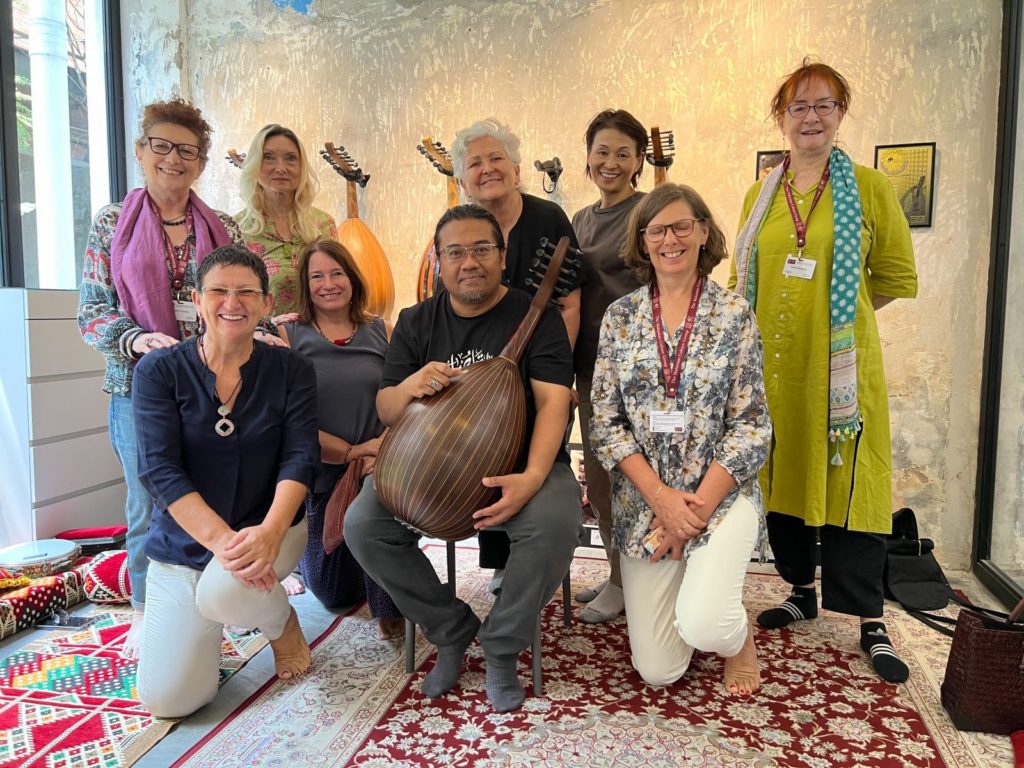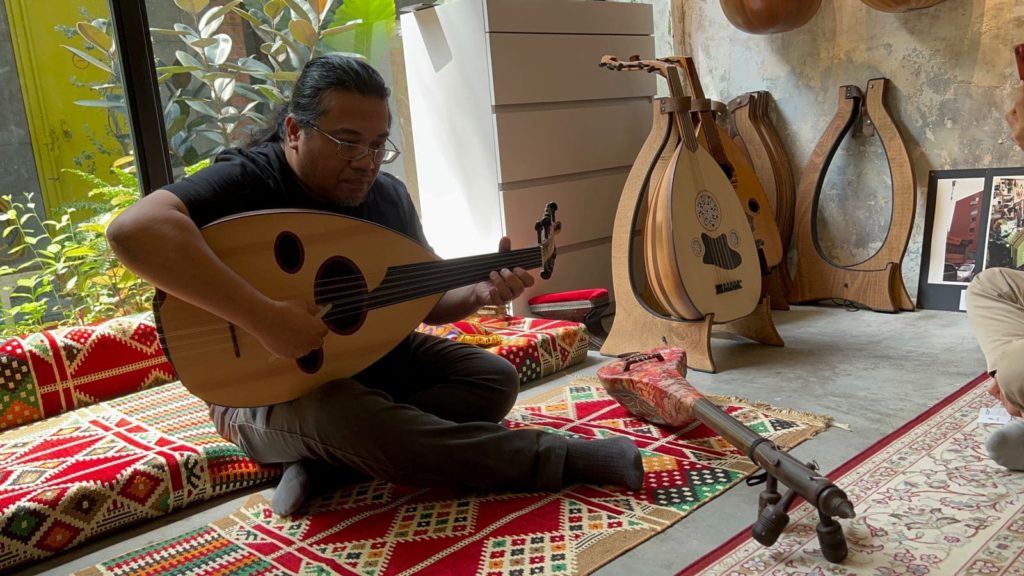
Indulge To The Beat of Gambus Workshop
Tuesday, 19th September, 2023
Have you heard the sound of the oud (called the gambus in this part of the region)? It makes you feel as if you were in the Arabian desert – the moon, the silhouettes of camels and palm trees in the dunes…. The gambus is an Arab traditional musical instrument inherited from the Islamic culture and later assimilated to the Malay culture.
On Tuesday September 19th, a group of 8 MCG Explorers members and Tajuddin visited Mr. Raja Zulkarnain, founder of the Rumah Gambus and president of the Malaysian Oud Association located on Jln Tun HS Lee, near Masjid Jamek.

Upon our arrival, we were greeted by Mr. Zulkarnain (he asked us to call him Zul) who is originally from Johor and has a PhD in Creative Arts (music) from ASWARA. He is the first Malaysian to study at Cairo’s prestigious Beit Al-Oud Al-Arabi music school. As soon as we entered the Rumah Gambus, a small studio which Zul uses as “one stop center for the gambus”, we were astonished by the beauty of the shiny teardrop-shaped instruments on the wall and the floor.
The traditional gambus is handmade, normally made of padauk, rosewood, or wenge for the bowl and is played with an eagle feather or a water buffalo horn. Some of them have beautiful carvings covering the sound holes.
The gambus is a short-necked lute that originated in the Middle East and spread throughout the Arabian Peninsula. How and when did it reach the Malay Peninsula? According to Zul, there are two common theories. It was adapted and developed further into new forms in the Malay Peninsula either after being introduced by the traders from the Middle East through Melaka around the 15th century or through the emergence of the Aceh-Johor-Riau kingdom after the fall of Melaka. Anyway, the gambus was frequently used in the performances of many Malay music genres like zapin and became fundamental to the cultural practices particularly for the Malay Muslim community. As a result, it is considered as one of Malaysia’s prominent traditional instruments. I have been learning about Malaysian history. I am always amazed by how Malayan people accommodated different cultures and incorporated them into their own culture. That really shaped today’s Malaysian culture.
To our ears, the gambus sound is similar to the acoustic guitar. However, what one chooses to play on the gambus makes a big difference. It is quite spiritual, according to Zul. For example, people used to play the gambus for patients at a hospital before their surgeries to make them calm. Zul normally doesn’t use sheet music. He says the most important thing is to play the gambus impromptu to express his feelings. After demonstrating to us how to play Ajam (happy tune), Nahawand (sad tune), Rast, Kurd, etc., Zul played some music for us. It was beautiful and emotional. I really love the sound.
Zul is concerned that today there is not much of an interest in the instrument, and there are only a few gambus pioneers left in the country. He himself also wasn’t aware of the gambus until he became fascinated by the oud in London where he was studying music (guitar). Then he went on to study the instrument in Cairo. He has been playing the instrument for more than 20 years, and has tried to increase the awareness of the instrument by offering concerts, talks, and lessons. He hopes that people will realize how the gambus is relevant and an important part of the Malaysian history and heritage.
It was such a wonderful and informative visit. The sound of the gambus really touched our heart.
Noriko Nishizawa
